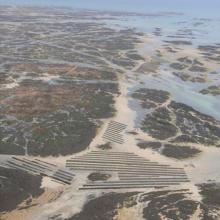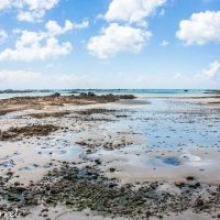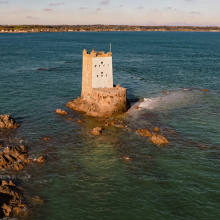


South East Coast of Jersey, Channel Islands
- Country:United Kingdom of Great Britain and Northern Ireland (Crown dependencies)
- Site number:1043
- Area:3,142 ha
- Designation date:10-11-2000
- Coordinates:49°09'N 02°02'W
Materials presented on this website, particularly maps and territorial information, are as-is and as-available based on available data and do not imply the expression of any opinion whatsoever on the part of the Secretariat of the Ramsar Convention concerning the legal status of any country, territory, city or area, or of its authorities, or concerning the delimitation of its frontiers or boundaries.
Overview
The Site extends from the port of St Helier to Gorey Harbour on the Channel Island of Jersey. It is considered the jewel in Jersey’s coastal crown. It is among the largest and most biodiverse intertidal and shallow-water reef sites in Western Europe, with a rich and diverse complex of intertidal and subtidal habitats which support an abundance of animal life and at maximum spring tides an exposed shoreline area in excess of 17.5 square kilometres. Large areas of key habitat are present for many species of fish and shellfish. The large, shallow, depositing, soft sediment bay and seagrass meadows provide important passage and wintering habitat for nationally important populations of waders and wildfowl, and there are several nesting bird colonies. The Site is also used by one of the largest populations of breeding bottlenose dolphins (Tursiops truncates) in the British Isles, a small breeding population of grey seal (Halichoerus grypus), and in winter by harbour porpoise (Phocoena phocoena). It is used for general recreation, boating and recreational fishing activities, and is also important for aquaculture. The main threats are posed by dredging, pollution, over-fishing and harvesting, recreation and tourism, invasive non-native species, and climate change.
Administrative region:
Bailiwick of Jersey, Channel Islands
- Regional (international) legal designations:
- Other international designation
- Last publication date:10-04-2024
Downloads
Ramsar Information Sheet (RIS)
Archived RIS
Site map
Additional reports and documents
- Site management plan
- Other published literature
